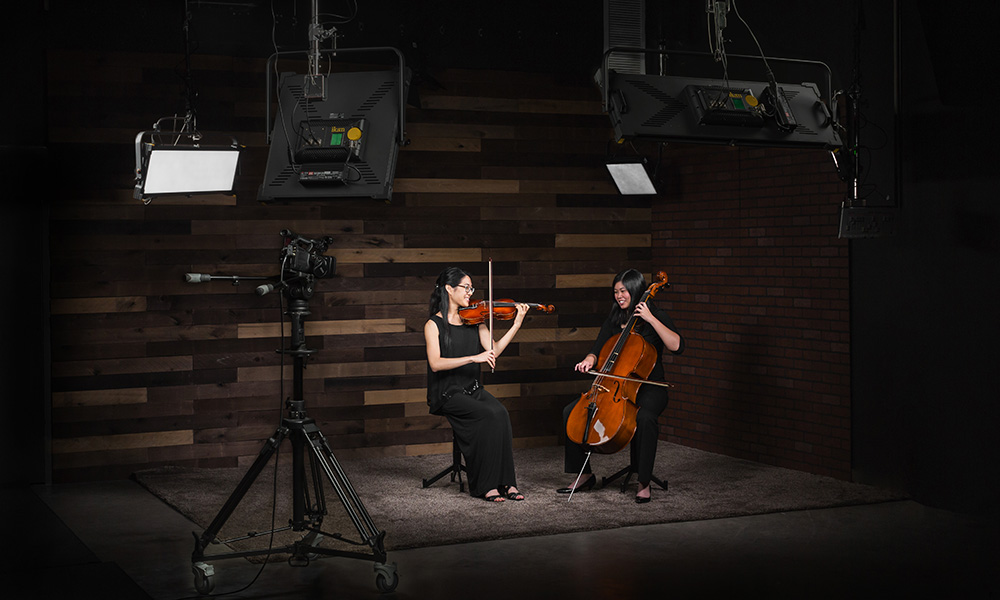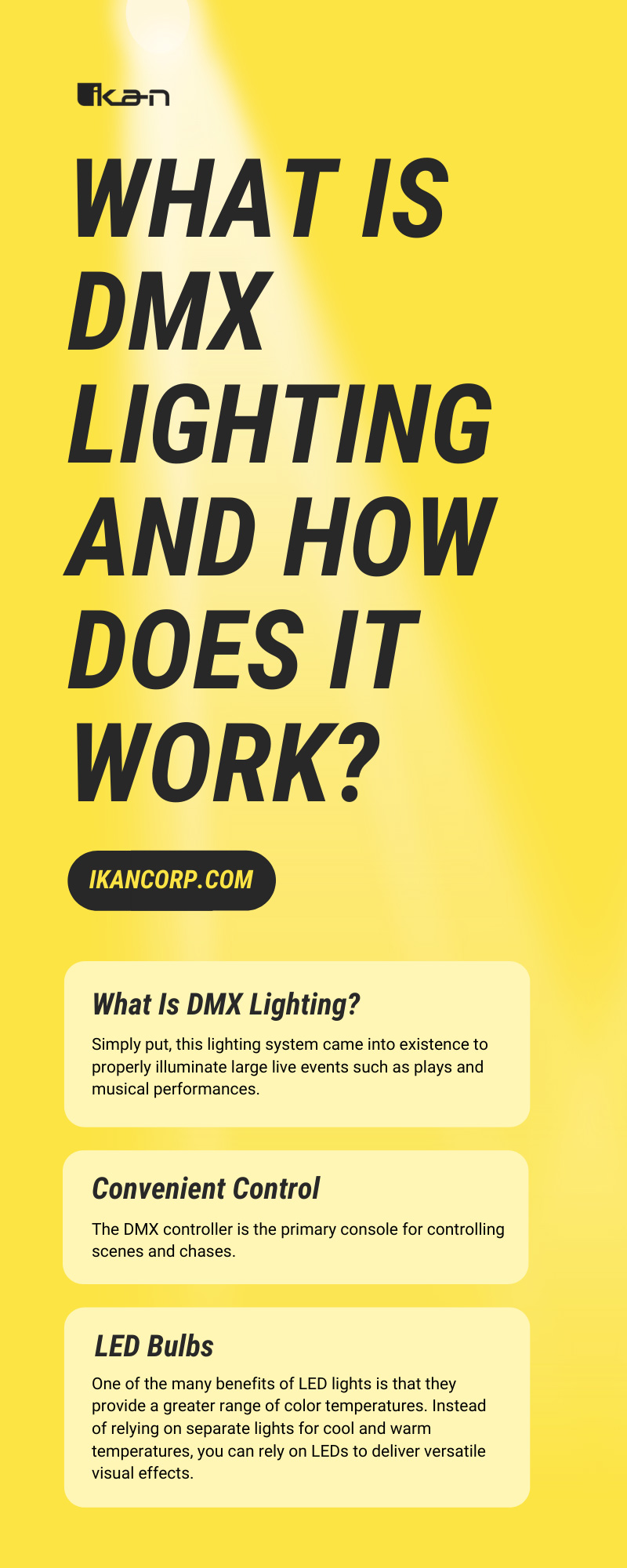
Exploring the various production equipment on the market makes it easy to expand your operation in effective and productive ways. For example, what is DMX lighting and how does it work? If you don’t know the answers, then you should take the time to learn what makes this lighting style such a valuable asset on set. Read our comprehensive guide to discover what DMX lighting is and how it can change your production for the better.
What Is DMX Lighting?
In the context of DMX lighting, the titular acronym stands for “digital multiplex signal.” Simply put, this lighting system came into existence to properly illuminate large live events such as plays and musical performances. In the previously mentioned applications, the production team typically has to control an array of lights during a show. In some cases, the team may need to switch between various lighting positions simultaneously.
Although that can be a daunting task, DMX lighting can make the arrangement much more efficient. For instance, DMX controls provide productions with a way to create various lighting presets for shows. The term for these presets is “scenes,” and DMX controllers come with multiple options for creating these scenes. For instance, at Ikan, our library of DMX lighting kits contains controllers ranging from 40 to 96 programmable scenes. Then, once you create multiple scenes, you can create a sequence of scenes called a “chase.”
These consoles have a very similar appearance to studio sound mixers, which make it easy and efficient to adjust sound settings instantly. Not only do the consoles look similar, but they also bring a similar level of productivity to the table.
Thanks to this efficient technology, DMX lighting is now a prevalent tool for lighting broadcast studios and other video production sets. So, what are the benefits of installing these lights and using them during a shoot? Let’s start with the primary benefit—better control.
Convenient Control
For those unaware, DMX lighting is more than a set of bulbs. As mentioned above, the DMX controller is the primary console for controlling scenes and chases. Thanks to chases, you can fine-tune your scenes to create a concise lighting effect on your set. That said, when you want to utilize one static lighting preset, don’t worry—you can choose individual scenes with ease.
Furthermore, controllers come with additional features that vary between models. For example, at Ikan, our 96-channel console features audio input, cross-fade, and more features for optimizing your production. However, our 6-channel console provides a more compact way to use DMX lighting with only the essentials. DMX lighting control consoles come in many forms to assist various production needs, though even compact 6-channel consoles bring versatility to your lighting effects.
As mentioned above, bulbs aren’t the only part of your DMX arrangement, but they are also a central part, nonetheless. Production teams can use various types of bulbs to illuminate their set, including tungsten, fluorescent, and LED. Since the bulb’s appearance is critical to the final look of your video or broadcast, knowing how to choose the right option is essential. Let’s break down the LED lights you can use to improve DMX performance.
LED Bulbs
Choosing bulbs is a key step for any production for various reasons. For example, the color of production lights can affect the emotional impact of the scene, whether you want the frame to feel cold or welcoming. Suffice it to say that if you’re lighting a scene that is heartwarming, illuminating the environment to reflect that feeling can enhance the way it captivates the viewers.
Plus, the light serves a practical function—helping the audience see what you want to show them. After all, live broadcasts that discuss news stories don’t always require the same type of visual storytelling as a film or stage play. Sometimes, the right light comes down to ensuring the audience can see a host or speaker clearly
LED & Lighting Essentials
Let’s wrap back around to the three primary types of production lights—tungsten, fluorescent, and LED. Tungsten bulbs create a warm effect in-camera or on-stage, whereas fluorescent bulbs are much cooler. These color temperatures help productions of many different kinds, from film to TV and beyond, and create specific visual aesthetics and atmosphere. After all, visuals in any video can create distinct feelings that improve or hinder the overall impact of the content. If you want to improve your set with lighting, then knowing what you want your lights to look like is key.
One of the many benefits of LED lights is that they provide a greater range of color temperatures. Instead of relying on separate lights for cool and warm temperatures, you can rely on LEDs to deliver versatile visual effects. In addition, LEDs emit less heat than other options while consuming less energy when operational.
Furthermore, the versatility of LEDs mixes perfectly with the flexibility of DMX controllers. Thanks to the various lighting effects that you can capture with LEDs, these devices will help you achieve a wide range of aesthetics across many different production niches.
Using DMX for Productions
So, what is DMX lighting and how does it work? Thanks to the details above, you should have a firmer grasp on how to answer both questions more confidently. Of course, choosing the best console and lighting design comes down to what you need to showcase your set in a way that supports the content you’re making. Likewise, shop for DMX lights from reliable brands in the industry to ensure you’re getting a console that can deliver the expected performance for your project.
That said, even when shopping for reliable brands, you should always do a test run with your new hardware before using it on set. As you now know, DMX consoles have a lot of settings to experiment with, so doing a test run creates the chance to explore new ideas on how to brighten up your production. Tests also show you whether the system works or not. Discovering your lights don’t work right before you need to use them for a production is certainly a situation that’s best to avoid. Thanks to the details above, you can put together a plan to boost production efficiency rather than reduce it.

